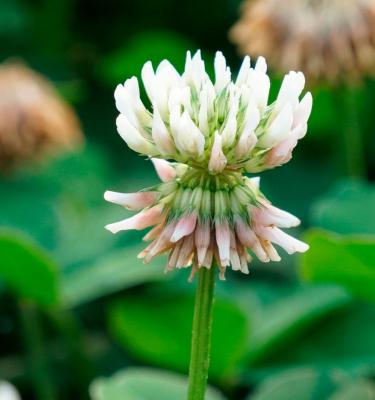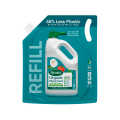

Clover
Clover (Trifolium ssp.) is a perennial wildflower that is regarded as a weed when it appears in lawns and flower beds.
It can be difficult to remove completely from lawns, as it can survive repeated mowing and some species are resistant to weedkiller.
Although it is generally considered a weed in gardens, clover flowers are a very good nectar source for bees. In gardens with enough space, it is worth allowing clover to grow in an unused corner to benefit garden wildlife.
How To Identify Clover?
Clover is easily identified by its trefoil (three-lobed) leaves – these are petal shaped and are about 1.5cm long. White clover (Trifolium repens) has white or pink flowers in summer and usually blooms from early spring onwards. It’s easy to spot as the small blooms form a cluster that looks a little like a small ball of white petals.
Trifolium dubium, or lesser trefoil, has yellow flowers. Clover spreads by creeping stems, forming low-growing mats of foliage. It also self-seeds readily. As clover has a shallow root system it doesn’t tolerate drought well.
Why it's so damaging
Clover competes with other plants for nutrients and water. In lawns, clover can spread to form dense mats of foliage, smothering the grass.
How To Control Clover?
Remove naturally
- To get rid of clover in lawns, dig out affected areas and either replace with new turf or re-seed bare areas.
- Mow lawns regularly to prevent clover self-seeding. Rake the lawn before mowing to lift up the clover stems so that the mower cuts off more of the plant.
- In borders, dig out clover plants by hand using a hand fork.
Using weedkiller
- Use a selective weedkiller such as Scotts Lawn Builder™ Bindii Weedkiller to get rid of clover in lawns. This is best done in summer and will need to be repeated in the following spring, as clover self-seeds readily and new plants are likely to appear.
- Always follow the manufacturer’s instructions when using weedkiller.
How To Prevent Clover?
Regular lawn maintenance will help prevent clover in lawns.
- Aerate lawns annually to improve drainage, making holes in the lawn surface with a garden fork or hollow tine aerator.
- Feed lawns in spring and autumn to promote the growth of healthy turf, which will crowd out clover and other lawn weeds.












